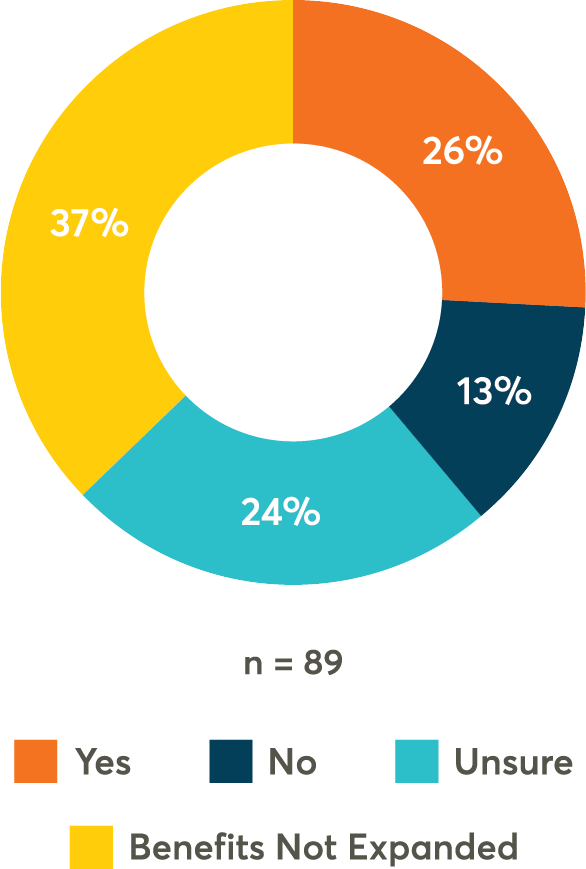Every month, Wellable asks a single question to the large, growing, and dedicated community of human resources and wellness professionals subscribed to the Wellable Newsletter. The question for February was about whether or not employers plan to end caregiving benefits that were added during the height of the COVID-19 pandemic.
Does your organization plan to roll back certain caregiving benefits that were offered during the pandemic as schools, long-term care facilities, and other establishments reopen?

As many as 37% of employees could lose expanded caregiving benefits and support as pandemic-related restrictions and closures come to an end. While only 13% of employers say they will discontinue these benefits, almost a quarter (24%) remain undecided. After the unexpected turns the past year has taken, it is understandable that employers have not yet made definitive plans when it comes to envisioning post-COVID-19 operations. Some companies may believe that these benefits are unnecessary when “normal life” returns, but at least 26% of employers recognize the benefits of providing adequate resources and support for their employee-caregivers and will choose to keep these new offerings. For 37% of respondents, this question did not apply as they had not expanded benefits.
Caregiving Needs Will Likely Outlast Pandemic
The pandemic created unique challenges for caregivers and, in turn, accelerated the expansion of caregiving benefits. Working parents found themselves juggling virtual learning and added family responsibilities as daycares and schools closed indefinitely. Caregivers to elderly or sick family members encountered closed facilities and restricted services. For those with family members in higher-risk groups, there was also increased anxiety and concern over taking proper precautions to prevent transmission of illness. Of course, some of these problems are likely to be resolved as the pandemic fades. However, the unique challenges faced by employee-caregivers existed even prior to COVID-19 complications, and they will remain even as more care facilities and schools reopen.
In reality, the pandemic simply highlighted unmet employee wellness needs, as caregiving benefits had been rising in popularity even before 2020. With the baby boomer population aging into retirement, more than 54 million working Americans have reported caring for an older relative within the last five years. On top of this, more households than ever before feature two working spouses, increasing the need for childcare resources and facilities. Additionally, changes brought on by the pandemic inspired many people to reevaluate their work-life balance. Some have found that they enjoy being more involved in certain family responsibilities (such as homeschooling endeavors) and might be thinking of quitting or taking more time away from work due to scheduling conflicts, stress, or lack of support. This may be especially true for working women, who often take on a disproportionate amount of childcare responsibilities, and could lead to a widening of the gender pay gap.
Benefits Retain Talent, Improve Productivity
Caregiving responsibilities have a measurable impact on workforce productivity. It is estimated that $33 billion is lost annually due to caregiver-workers needing to rearrange schedules, take more time off, and address more responsibilities outside of the office. Together, all of these burdens can strain finances and mental and emotional well-being. Employers risk losing top talent if they cannot support these workers, but even employees that remain may be struggling to perform tasks well and focus.
One of the best ways to help is by catering to caregivers’ often-unpredictable and busy schedules. By providing generous paid time off, flexible scheduling options, and remote work options, employers can better meet the demands of both work and home life. It’s also important to make sure employees have adequate mental and emotional health resources and support, such as relevant counseling services as well as telemedicine options that are easier to take advantage of on busy days. Promisingly, many employers do recognize the need for expanded support even after COVID-19. In Wellable’s 2021 Employee Wellness Industry Trends Report, many employers reported that they are planning to invest more in caregiving benefits such as expanding the use of flexible schedules (89%), offering dependent care flexible spending accounts (66%), and subsidizing or offering childcare services (56%) beyond the pandemic.












